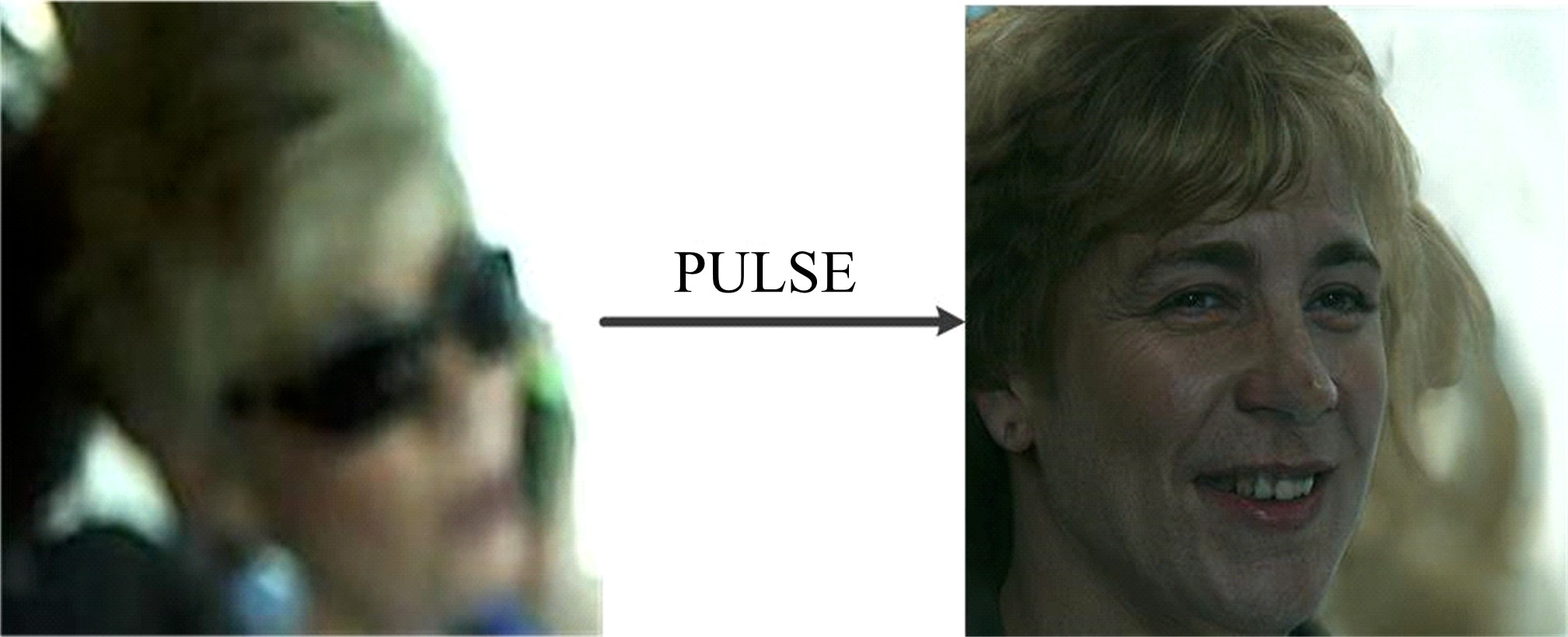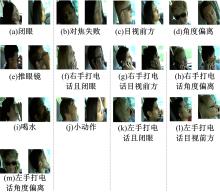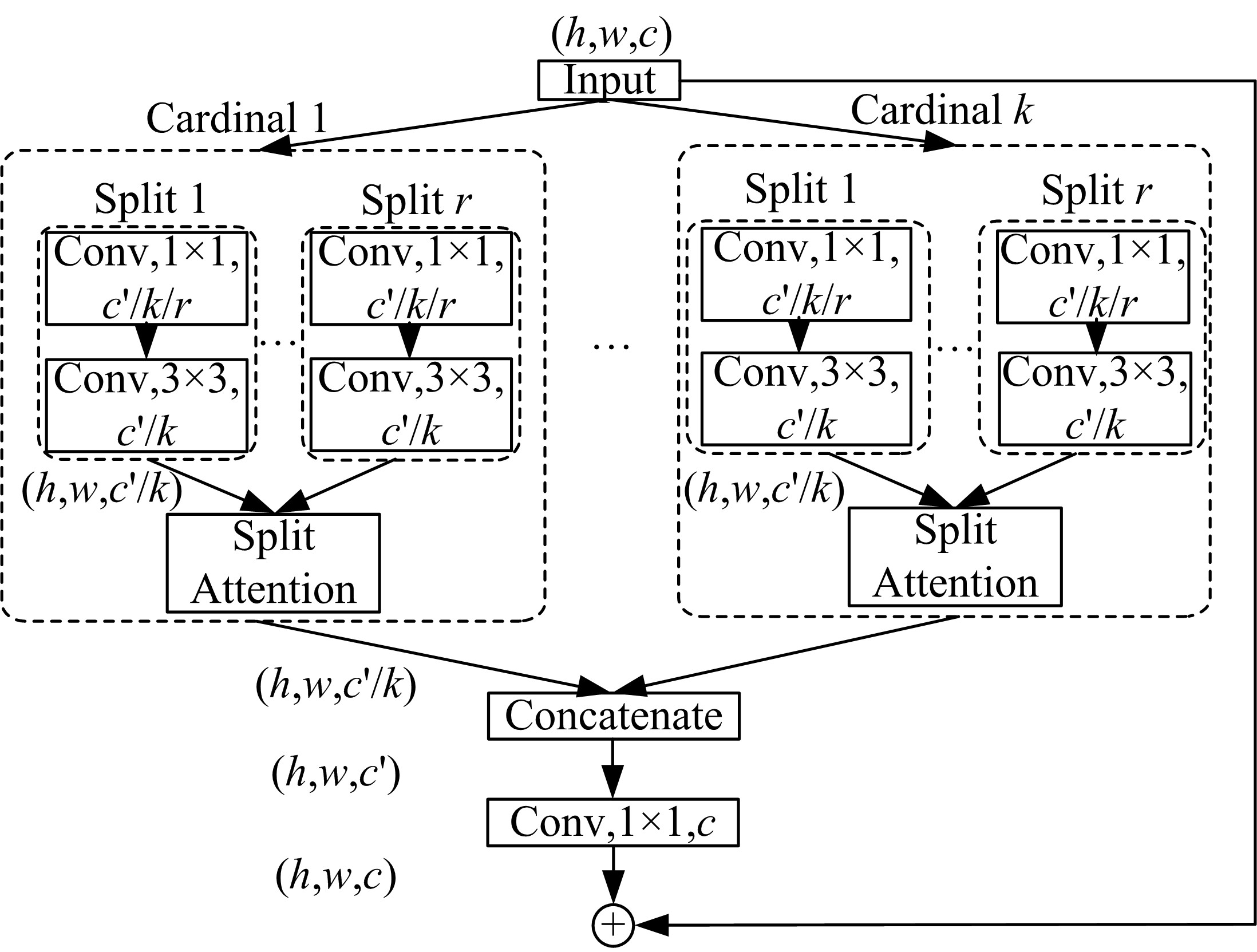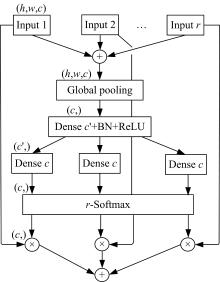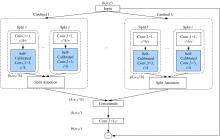Journal of Jilin University(Engineering and Technology Edition) ›› 2021, Vol. 51 ›› Issue (2): 704-711.doi: 10.13229/j.cnki.jdxbgxb20200767
Classification of drivers' head status based on improved ResNeSt
Qian-yi XU1,2( ),Gui-he QIN1,2,Ming-hui SUN1,2(
),Gui-he QIN1,2,Ming-hui SUN1,2( ),Cheng-xun MENG3
),Cheng-xun MENG3
- 1.College of Computer Science and Technology,Jilin University,Changchun 130012,China
2.Key Laboratory of Symbolic Computing and Knowledge Engineering,Ministry of Education,Jilin University,Changchun 130012,China
3.Jilin Hangsheng Electronics Co. ,Jilin 132013,China
CLC Number:
- TP391.9
| 1 | Li L, Song J Y, Wang F Y, et al. IVS 05: new developments and research trends for intelligent vehicles[J]. IEEE Intelligent Systems, 2005, 20(4): 10-14. |
| 2 | Li L, Wang F Y. Advanced Motion Control and Sensing for Intelligent Vehicles[M]. Springer Science & Business Media, 2007. |
| 3 | Jain A, Singh A, Koppula H S, et al. Recurrent neural networks for driver activity anticipation via sensory-fusion architecture[C]∥IEEE International Conference on Robotics and Automation, Stockholm, Sweden, 2016: 3118-3125. |
| 4 | Agustina G, Correa L, Orosco E, et al. Automatic detection of drowsiness in EEG records based on multimodal analysis[J]. Medical Engineering & Physics, 2013, 36(2): 244-249. |
| 5 | Patrick K C A, Imtiaz S A, Bowyer S, et al. An algorithm for automatic detection of drowsiness for use in werable EEG systems[C]∥Proceedings of the 38th Annual International Conference of the IEEE Engineering in Medicine and Biology Society, Orlando, FL, 2016: 3523-3526. |
| 6 | Zhao S, Xu G, Tao T. Detecting of driver's drowsiness using multiwavelet packet energy spectrum[C]∥Proceedings of the 2nd International Congress on Image and Signal, Tianjin, China, 2009: 1-5. |
| 7 | He Q, Li W, Fan X. Estimation of driver's fatigue based on steering wheel angle[C]∥Proceedings of the International Conference of Engineering Psychology and Cognitive Ergonomics, Berlin, Heidelberg, 2011: 145-155. |
| 8 | Zhang X B, Cheng B, Feng J J. Real-time detection method of driver fatigue state based on steering wheel operation[J]. Journal of Tsinghua University Science and Technology, 2010, 7(1): 1072-1076. |
| 9 | Tawari A, Trivedi M M. Robust and continuous estimation of driver gaze zone by dynamic analysis of multiple face videos[C]∥IEEE Intelligent Vehicles Symposium Proceedings, Dearborn, MI, 2014: 344-349. |
| 10 | Choi I H, Kim Y G. Head pose and gaze direction tracking for detecting a drowsy driver[C]∥Proceedings of the International Conference on Big Data and Smart Computing, Berlin, Heidelberg, 2014: 807-814. |
| 11 | Zhao L, Wang Z, Wang X, et al. Human fatigue expression and bimodal deep learning[J]. Journal of Electronic Imaging, 2016, 25(5): 53024-53034. |
| 12 | Halim Z, Kalsoom R, Baig A R. Profiling drivers based on driver dependent vehicle driving features[J]. Applied Intelligence, 2016, 44: 645-664. |
| 13 | Jabon M, Bailenson J, Pontikakis E, et al. Facial expression analysis for predicting unsafe driving behavior[J]. IEEE Pervasive Computing, 2011, 10(4): 84-95. |
| 14 | Papageorgiou C P, Oren M, Poggio T. A general framework for object detection[C]∥6th International Conference on Computer Vision, Bombay, India, 1998: 555-562. |
| 15 | Lowe D G. Object recognition from local scale-invariant features[C]∥Proceedings of the Seventh IEEE International Conference on Computer Vision, Kerkyra, Greece, 1999: 1150-1157. |
| 16 | Dalal N, Triggs B. Histograms of oriented gradients for human detection[C]∥Proceedings of Computer Vision and Pattern Recognition, San Diego, California, 2005: 886-893. |
| 17 | Donahue J, Jia Y, Vinyals O, et al. DeCAF: a deep convolutional activation feature for generic visual recognition[J]. Computer Vision and Pattern Recognition, arXiv: 1310.1531. |
| 18 | Lienhart R, Maydt J. An extended set of haar-like features for rapid object detection[C]∥Proceedings of International Conference on Image Processing, Rochester, NY, USA, 2002: 900-903. |
| 19 | Girshick R, Donahue J, Darrell T, et al. Rich feature hierarchies for accurate object detection and semantic segmentation[C]∥Proceedings of Computer Vision and Pattern Recognition, Columbus, Ohio, 2014: 580-587. |
| 20 | Blaschko M B, Lampert C H. Learning to localize objects with structured output regression[C]∥Proceedings of European Conference on Computer Vision, Berlin, Heidelber, 2008: 2-15. |
| 21 | Sermanet P, Eigen D, Zhang X, et al. Overfeat: integrated recognition, localization and detection using convolutional networks[J]. Computer Vision and Pattern Recognition, arXiv: 1312.6229. |
| 22 | Uijlings J R, van de Sande K E, Gevers T, et al. Selective search for object recognition[J]. International Journal of Computer Vision, 2013, 104(2): 154-171. |
| 23 | Zitnick C L, Dollar P. Edge boxes: locating object proposals from edges[C]∥Proceedings of European Conference on Computer Vision, Zurich, Switzerland, 2014: 391-405. |
| 24 | Bochkovskiy A, Wang C Y, Liao H Y M. YOLOv4: optimal speed and accuracy of object detection[J]. Computer Vision and Pattern Recognition, arXiv:2004.10934. |
| 25 | 李志军, 杨楚皙, 刘丹, 等. 基于深度卷积神经网络的信息流增强图像压缩方法[J]. 吉林大学学报: 工学版, 2020, 50(5): 1788-1795. |
| Li Zhi-jun, Yang Chu-xi, Liu Dan, et al. Deep convolutional networks based image compression with enhancement of information flow[J]. Journal of Jilin University (Engineering and Technology Edition), 2020, 50(5): 1788-1795. | |
| 26 | 刘国华, 周文斌. 基于卷积神经网络的脉搏波时频域特征混叠分类[J]. 吉林大学学报: 工学版, 2020, 50(5): 1818-1825. |
| Liu Guo-hua, Zhou Wen-bin. Pulse wave signal classification algorithm based on time⁃frequency domain feature aliasing using convolutional neural network[J]. Journal of Jilin University (Engineering and Technology Edition), 2020, 50(5): 1818-1825. | |
| 27 | He K, Zhang X, Ren S, et al. Deep residual learning for image recognition[C]∥Proceedings of the IEEE Conference on Computer Vision and Pattern Recognition (CVPR),Las Vegas, USA, 2016:770-778. |
| 28 | Xie S, Girshick R, Dollár P, et al. Aggregated residual transformations for deep neural networks[C]∥Proceedings of the IEEE Conference on Computer Vision and Pattern Recognition, Hawaii, USA, 2017: 1492-1500. |
| 29 | Hu J, Shen L, Sun G. Squeeze-and-excitation networks[C]∥Proceedings of the IEEE Conference on Computer Vision and Pattern Recognition, Salt Lake City, USA, 2018: 7132-7141. |
| 30 | Zhang H, Wu C R, Zhang Z Y, et al. ResNeSt: split-attention networks[J]. Computer Vision and Pattern Recognition, arXiv:2004.08955. |
| 31 | Competition Kaggle. State Farm Distracted Driver Detection[DB/OL]. [2019-10-12]. |
| 32 | Redmon J, Farhadi A. Yolov3: an incremental improvement[J]. Computer Vision and Pattern Recognition, arXiv:1804.02767. |
| 33 | Huang G, Liu Z, van der Maaten L, et al. Densely connected convolutional networks[C]∥Proceedings of the IEEE Conference on Computer Vision and Pattern Recognition, Hawaii, USA, 2017: 4700-4708. |
| 34 | Li X, Wang W, Hu X, et al. Selective kernel networks[C]∥Proceedings of the IEEE Conference on Computer Vision and Pattern Recognition, Los Angeles, USA, 2019: 510-519. |
| 35 | Liu J J, Hou Q, Cheng M M, et al. Improving convolutional networks with self-calibrated convolutions[C]∥Proceedings of the IEEE Conference on Computer Vision and Pattern Recognition, Seattle, USA, 2020: 10096-10105. |
| [1] | Yuan SONG,Dan-yuan ZHOU,Wen-chang SHI. Method to enhance security function of OpenStack Swift cloud storage system [J]. Journal of Jilin University(Engineering and Technology Edition), 2021, 51(1): 314-322. |
| [2] | Xiang-jiu CHE,You-zheng DONG. Improved image recognition algorithm based on multi⁃scale information fusion [J]. Journal of Jilin University(Engineering and Technology Edition), 2020, 50(5): 1747-1754. |
| [3] | Xiang-jiu CHE,Hua-luo LIU,Qing-bin SHAO. Fabric defect recognition algorithm based onimproved Fast RCNN [J]. Journal of Jilin University(Engineering and Technology Edition), 2019, 49(6): 2038-2044. |
| [4] | CHEN Mian-shu, SU Yue, SANG Ai-jun, LI Pei-peng. Image classification methods based on space vector model [J]. 吉林大学学报(工学版), 2018, 48(3): 943-951. |
| [5] | HU Guan-yu, QIAO Pei-li. High dimensional differential evolutionary algorithm based on cloud population for network security prediction [J]. 吉林大学学报(工学版), 2016, 46(2): 568-577. |
| [6] | CHEN Zai-qing, SHI Jun-sheng, BAI Feng-xiang. Automatic image classification based on fuzzy-rough set [J]. 吉林大学学报(工学版), 2013, 43(增刊1): 209-212. |
| [7] | TONG Jin, WANG Ya-hui, FAN Xue-mei, ZHANG Shu-jun, CHEN Dong-hui. Monitoring system of cold chain logistics for farm fresh produce [J]. 吉林大学学报(工学版), 2013, 43(06): 1707-1711. |
| [8] | WANG Ying, GUO Lei, LIANG Nan. Classification algorithm of hyperspectral images based on kernel entropy analysis [J]. , 2012, (06): 1597-1601. |
| [9] | LIU Ping-ping, ZHAO Hong-wei, GENG Qing-tian, DAI Jin-bo. Image classification method based on local feature and visual cortex recognition mechanism [J]. 吉林大学学报(工学版), 2011, 41(05): 1401-1406. |
| [10] | Cao Chun-hong Zhang Bin,Li Xiao-lin . Medical image classification technology based on fuzzy support vector machine [J]. 吉林大学学报(工学版), 2007, 37(03): 630-0633. |
|
||

